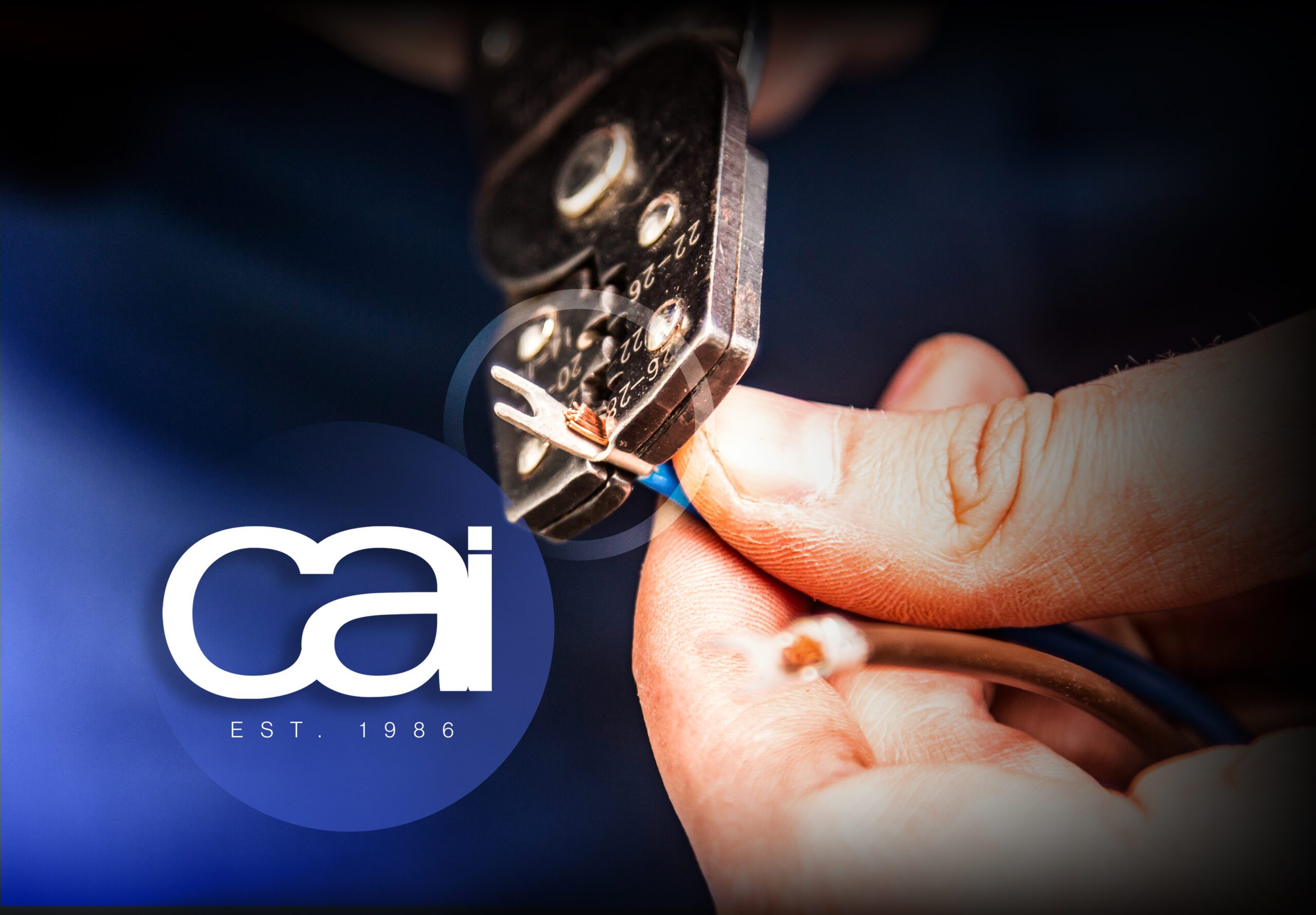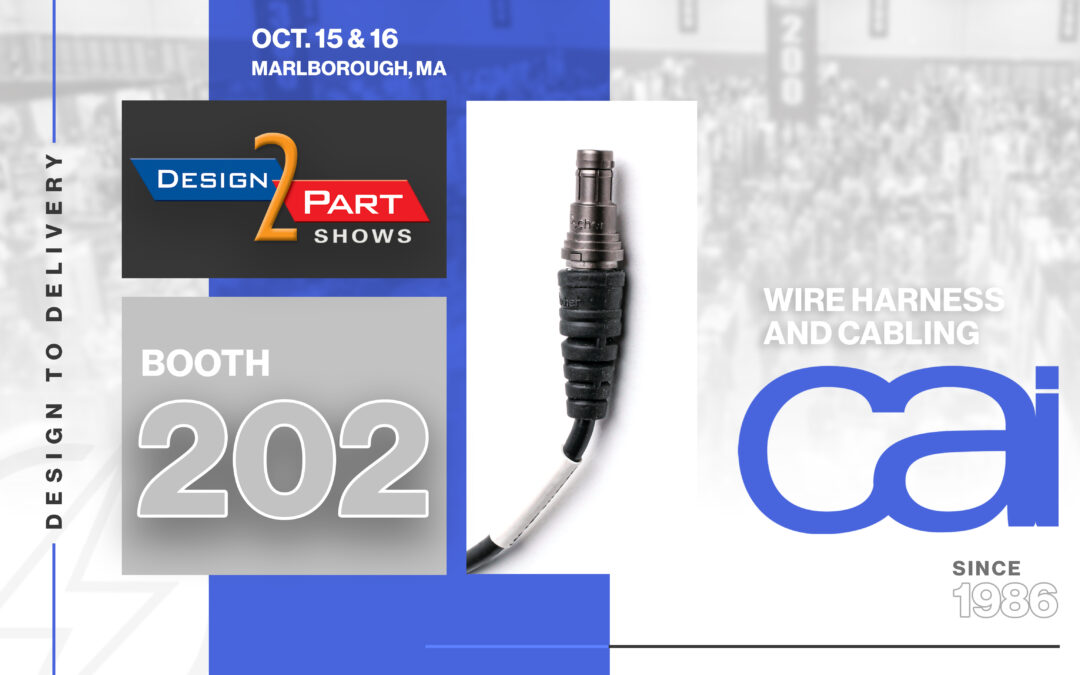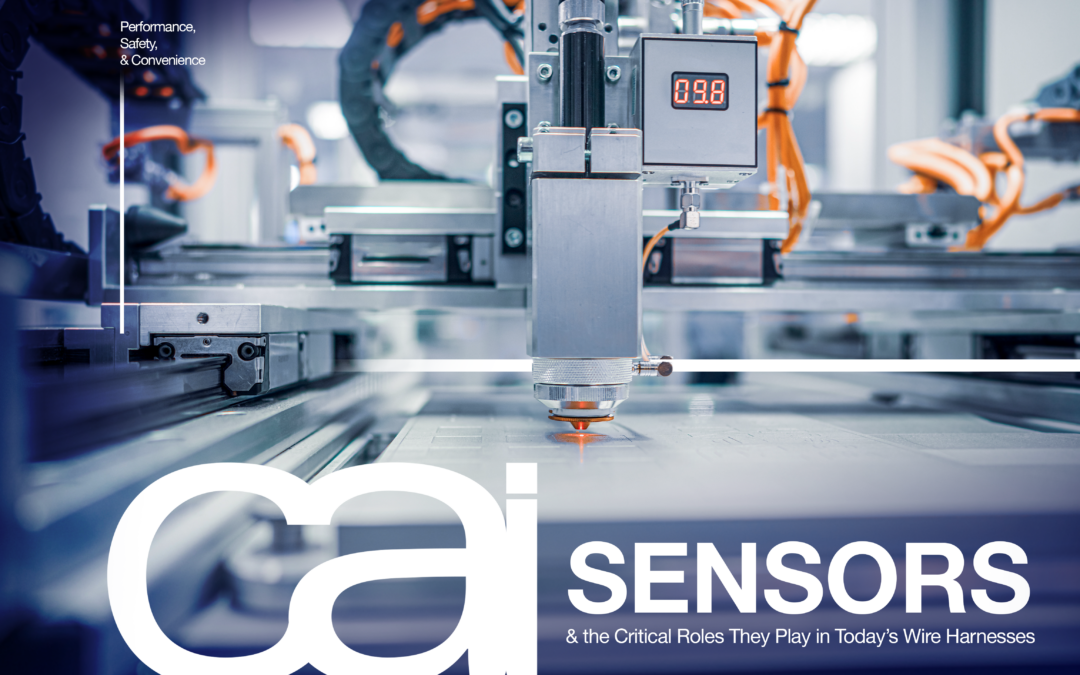Understanding the Go-To Joining Method for Electrical Cable & Wires
Secure, reliable connections are vital to the performance of cables, wires, cable assemblies, and wire harnesses prevalent in electrical and telecommunications systems. Crimping and soldering are the two main methods for joining conductors to each other (i.e. wires to wires and cables to cables) and conductors to connectors.
Soldering, the more traditional method, uses a soldering iron’s heat to melt a small amount of metal alloy (solder) to create a strong, reliable bond. Crimping uses manual or machine compression and deformation to connect components. While soldering is preferred for specific applications such as delicate, low-current circuit boards, the crimping process offers several benefits that make it the more popular option today for most other situations.
With extensive crimping experience and a full arsenal of calibrated crimping hand tools and machine fixtures, CAI is the ideal partner to handle your crimping needs and all your electrical components from custom wire harnesses to overmolded cable assemblies. Providing fully-integrated solutions from design to delivery, Connect with us today!
A crucial step when assembling wire harnesses or cable assemblies, crimping requires the appropriate tools and components to ensure safe, reliable, long-lasting connections, electrical conductivity, and mechanical integrity.
Crimping Benefits
Crimped connections are more consistent, flexible, heat-resistant, and vibration-resistant than soldered ones which have greater potential for wire fatigue and stiffening. Furthermore, the crimp-on process is simpler, quicker, and easier to repeat. Properly crimped wire strands can create a “cold weld” in which the pressure is so great that the metals and their oxide layers form on a micro-level. This ensures a strong, reliable electrical connection, reducing the risk of intermittent or failed connections. Secure crimps minimize the likelihood of short circuits, electrical shocks, and fires.
Crimping is the technique of choice in demanding industries such as aerospace and automotive, that demand the strongest, most reliable connections and can’t risk the degradation of filler metals.
Effective crimping techniques ensure optimal electrical conductivity, reducing energy loss and optimizing the performance of electrical or telecommunications systems.
Properly crimped connections are more resistant to environmental factors like moisture and temperature changes, ensuring long-term reliability.
3 Key Components to Crimping
There are three essential components to the crimping process:
-
- Conductor: Made of electrically conductive material like copper or aluminum, the conductor, or wire/cable, carries the electrical current.
-
- Connector or Terminal: These are the components to which the conductor is to be tightly secured using force.
-
- Crimping Tools: The crimper uses specialized tools, such as pliers or machines, to apply the required pressure to successfully deform and attach the component to the conductor.
Cable Crimping Methods
With several different cable crimping methods, each with their own advantages and limitations, choosing the right one depends on the project requirements and production volumes. Here are some of the most common cable crimping methods:
Manual Cable Crimping
Suitable for low to moderate production volumes, manual crimping involves the use of human force and handheld tools. These tools typically feature handles and interchangeable dies or jaws for specific connector sizes and types. Used in fieldwork and smaller-scaled projects, manual crimping offers ultra-portability and ease of use, though the quality tends to vary based on the individual crimper.
Hydraulic Cable Crimping
Utilizing specialized hydraulic machines or handheld options which use hydraulic pressure, hydraulic cable crimping tools have adjustable pressure settings and a variety of die sets for different connectors. Better for high volumes, hydraulic crimping provides consistent, high-quality connections, using greater force and precision compared to manual crimping
Pneumatic Cable Crimping
Pneumatic (air-powered) crimping tools generate force through compressed air. These tools are typically handheld and easy to operate. Great for when portability and speed are of the essence, pneumatic crimping tools are usually handheld and provide consistent, repeatable crimps.
Electromechanical Cable Crimping
Combining electric motors with mechanical parts, electromechanical cable crimping machines typically feature automation and programmability for superior precision and efficiency, making them an ideal choice for high volumes and crimping requiring strict quality standards.
Crimping Profiles
The crimping process is relatively simple, but there are a few considerations that must be handled precisely to achieve all the benefits of a well-executed crimp, including correct conductor sizing, wire type, terminal type, and crimping profile. The correct crimping profile option depends on the specific material, design, and application involved.
Hexagonal crimping is the most common crimping profile for cable lugs and connectors of aluminum and copper wires. Indent crimping produces a durable, deep-penetrating connection for aluminum and copper. A quad-point crimp profile allows for simple processing of copper wires, while notch crimping is best for control cabinet construction with copper wires.
Cable crimping directly impacts the durability, reliability, safety, and efficiency of electrical systems. At CAI, we use a combination of hand crimping and machine crimping to achieve the most efficient and secure terminations and connections. Rather than take a chance with less-than-reliable joining, trust us to provide the expert craftsmanship your electrical systems deserve. Talk to us about your project today!





